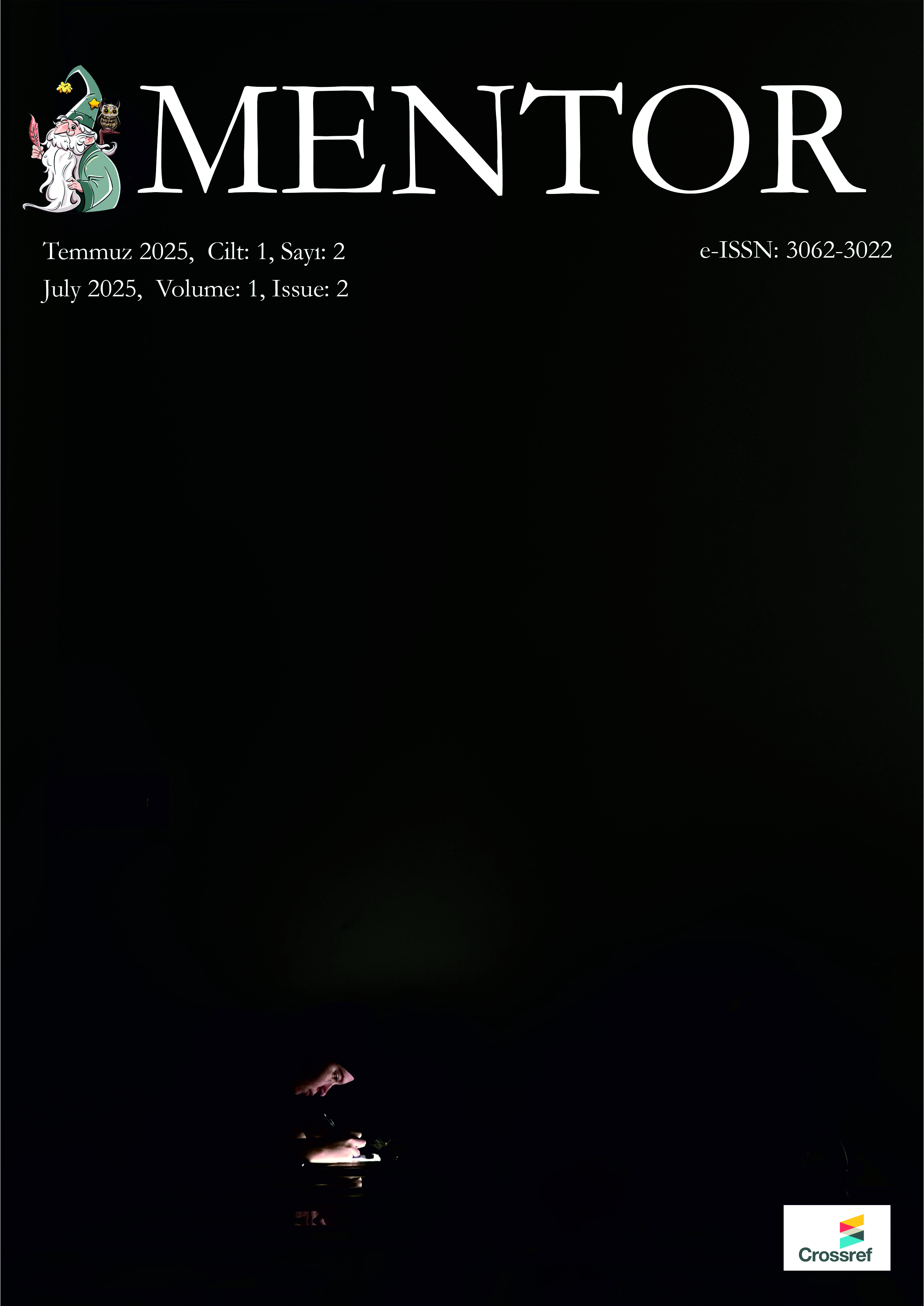Pixel Art and its Applications on Yeşilçam Movies
DOI:
https://doi.org/10.64293/mentor.v1i2.9Keywords:
Pixel, Pixel Art, 8-bit, Digital Art, AnimationAbstract
Pixel art, recognized as one of the digital arts, is a form of artistic expression composed of meticulously arranged pixels and has gained significant prominence today. Gaining popularity through the low-resolution video games of the 1980s and 1990s, pixel art is now widely utilized in advertising, animation, graphic design, and various artistic disciplines. This study examines how the nostalgic aesthetic of pixel art is utilized today and how the most iconic scenes of Yeşilçam films are reinterpreted using this technique. It has been revealed that pixel art is not limited to the gaming industry but also plays a crucial role in developing digital art. The primary objective of this research is to introduce the concept of pixel art to Türkiye and to provide an alternative perspective on some of the classic Turkish films by reinterpreting their most memorable scenes. This study employs a literature review methodology, in which academic sources and library archives were examined to obtain the necessary data. The research findings indicate that the nostalgic effect of pixel art serves as an engaging element for audiences. When the iconic scenes of Yeşilçam films are reinterpreted in pixel art, they create both a visual and emotional context, capturing the viewer’s interest. Studying this art form in Yeşilçam films demonstrates how effectively it can be used in various media fields. In the future, new projects can be developed to make pixel art more accessible to a wider audience, creating a creative platform for artists.
References
Ak, H. A. (2013). Dijital Sanat, Akademik Bilişim 2013 - XV. Akademik Bilişim Konferansı Bildirileri, Akdeniz Üniversitesi: Antalya, 2, 977-981.
Arı, N. (2015). Sinematografik Anlatımda Stop Motion Canlandırmanın Bir Tekniği “Pixilation” ile Uygulama Projesi, [Yayımlanmamış Yüksek Lisans Tezi] Hacettepe Üniversitesi: Ankara.
Atasoy, S. N. (2023). Erken Dönem Dijital Çağdan Günümüze Üslupsal Bir Fikir Olarak Pikselleşme, Giresun Üniversitesi Görele Güzel Sanatlar Fakültesi, 102, 153-166.
Clarke, J. (2012). Sinema Akımları: Sinema Dünyasını Değiştiren Filmler, Kalkedon Yayınları: İstanbul, 13.
Dursun, N. (2013). Evrimleşen Grafik ile İllüstrasyon ve Animasyon İlişkisi, [Yayımlanmamış Yüksek Lisans Tezi], Arel Üniversitesi: İstanbul.
Erhan, M. Ç. (2013). Digital Image Processing (Sayısal Görüntü İşleme), https://mcagriberke.wordpress.com/2013/06/18/digital-image-processing-sayisal-goruntu-isleme/
Ersoy, A. (2002). Sanat Kavramlarına Giriş, Yorum Sanat Yayıncılık: İstanbul, 5.
Grahn, E. (2013). Modern Pixel Art Games, Blekinge Tekniska Högskola, Sektionen för planering och mediedesign: İsveç, 5-6.
Inglis, T. C., Vogel, D. ve Kaplan, C. S. (2013). Rasterizing and Antialiasing Vector Line Art in the Pixel Art Style. Anaheim, California, 25.
Johnson, H. ve Shaw J. S. (2005). Glossary of Digital Art and Printmaking. Erişim Linki: http://www.dpandi.com/DAPTTF/glossary.html, Erişim Tarihi: 15 Nisan 2018.
Karasar, N. (2008). Bilimsel Araştırma Yöntemleri, Nobel Yayın: Ankara, 77.
Korkmaz, S. (2012). Grafik ve Animasyon. Erişim Linki: http://web.hitit.edu. :80/dosyalar/materyaller/huseyincizmeci@hititedutr210220144R1D3M4O.pdf, Erişim Tarihi: 17 Mayıs 2017.
Mayor, D. (2021). NFTs and the Legitimizing Power of Copyright, Erişim Linki: https://lawreview.law.miami.edu/nfts-legitimizing-power-copyright/, Erişim tarihi: 25 Ocak 2025.
Oduncu, S. (2022). NFT, Kripto Sanatı ve Türkiye’deki Yansımaları, Süleyman Demirel Üniversitesi ART-E Güzel Sanatlar Fakültesi Sanat Dergisi, Cilt:15, Sayı:29, 195-224.
Paul, C. (2008). Digital Art, Thames and Hudson: London, 7.
Sağlamtimur, Z. Ö. (2010). Dijital Sanat, Anadolu Üniversitesi Sosyal Bilimler Dergisi, Cilt:10, Sayı:3, 213-238.
Smith, M. R. (2016). Hip to be Square / The Pixel Revolution in Art and Visual Culture. BlackFlash Magazine, 38-42.
Tanimoto, S. L. (2012). An Interdisciplinary Introduction to Image Processing: Pixels, Numbers and Programs, Massachusetts Institute of Technology: USA.
Tanyıldızı, B. (2008). Çağdaş Resim Sanatında Dijital Görüntü Estetiği, [Yayımlanmamış Yüksek Lisans Tezi], Dokuz Eylül Üniversitesi: İzmir.
Wang, Q., Li,R., Wang Q. ve Chen, S. (2021). Non-Fungible Token (NFT): Overview, Evaluation, Opportunities and Challenges, Birmingham, England, 1.
Westerdiep, A. (2017). Isometric Pixel Art. Erişim Linki: https://www.drububu.com/tutorial/, Erişim Tarihi: 15 Ocak 2018.

Published
Versions
- 2025-07-16 (5)
- 2025-07-14 (4)
- 2025-07-14 (3)
- 2025-07-14 (2)
- 2025-07-14 (1)
How to Cite
Issue
Section
License
Copyright (c) 2025 Pınar Şamlı

This work is licensed under a Creative Commons Attribution 4.0 International License.



